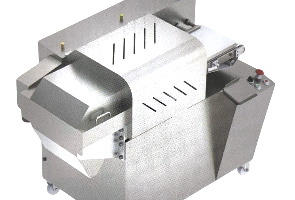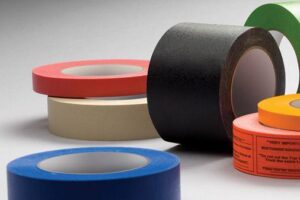
Bathroom upgrades demand smart planning and strong materials to ensure lasting results. Homeowners often seek parts that resist water, stay strong over time, and keep the space fresh. Many turn to PVC pipe & fitting as a trusted solution for these needs. Its smooth flow, quick setup, and rust-free nature make it perfect for busy homes.
Bathroom systems must work quietly behind walls while staying tough under daily use. A well-chosen fitting not only improves function but also prevents future problems. Good planning with the right materials builds a bathroom that feels clean, works well, and stands the test of time.
Why Builders Pick PVC for Bathrooms
PVC does more than just carry water. It fights off rust, blocks mould, and keeps the air fresh. This helps the bathroom stay clean and safe. When builders want a neat and strong finish, they often grab PVC fittings for HDB bathroom jobs.
These parts click together fast. That means workers can wrap up the work sooner. If a part breaks or leaks, they can swap it out easily without tearing the walls. That saves time, money, and mess.
Where You’ll Spot PVC Fittings in the Bathroom
PVC shows up in more places than you think. Under the sink, behind the toilet, and under the shower floor, you’ll find plastic plumbing components hard at work. These fittings join pipes tightly so water doesn’t leak. When water flows, these pieces guide it the right way, keeping your floors dry.
Even the pipes that push air out of the bathroom often use PVC. They carry smelly air outside and pull in fresh air to make the room feel clean. These fittings fit snugly, so smells and damp air don’t creep back in.
How PVC Jacketing Helps the Pipes
Along with the fittings, PVC jacketing plays a big part. Think of it like a coat for your pipes. It hugs the pipe and shields it from heat, sharp tools, and other damage. In hot, wet bathrooms, this jacket also blocks water from building up on the outside of the pipe.
That matters because when water drips off pipes, it puddles on floors or inside cabinets. That can cause mould or stains. With a Plastic insulation layer, your pipes stay dry and safe. It also muffles noise, so your bathroom sounds calm when water runs.
Why Old HDB Homes Need New PVC Fittings
Many older HDB flats still use metal pipes. Over time, these pipes rust, crack, or clog. When that happens, water doesn’t flow right. Builders now replace these with PVC fittings for HDB bathroom upgrades. These parts last longer and stand strong against heat and moisture.
PVC also helps workers reshape bathroom layouts. If you want to move a sink or shower, these fittings bend, turn, and stretch to fit your new plan. You don’t need to rip out every wall—just twist, cut, and attach where needed.
Since PVC weighs less than metal, builders can lift and fit it with ease, even in small places. That makes the job quicker and neater. Plus, it costs less to fix when things go wrong.
PVC Makes Bathrooms Work Better
HDB flats often hold many families in small spaces. That means each bathroom gets used a lot. The more people use it, the more the pipes and fittings wear down. When you use PVC pipe & fitting, you build a bathroom that can hold up through years of heavy use.
PVC doesn’t just do the job—it boosts the whole system. The water flows smoother, the air smells fresher, and the floor stays drier. Plastic insulation layer keeps pipes safe from harm and water from dripping. The fittings keep everything connected, tight, and strong.
Builders Like PVC Because It’s Easy
People who work on HDB bathrooms like using PVC. They can cut, fit, and join the pieces fast. They don’t need special tools or a lot of time. When something goes wrong, they can pop off a fitting and drop in a new one.
This makes PVC a smart choice for repairs. You don’t need to dig into walls or floors. A small fix can solve a big problem.
Also, builders can shape PVC to fit tricky spaces. Bathrooms often have odd corners, tight bends, and little room to move. PVC helps workers curve, lift, or tilt the pipes just right.
Comparing PVC Fittings with Other Plumbing Materials
PVC fittings stand out, but many people still consider copper or stainless steel for bathroom plumbing. While metal pipes offer strength, they often rust or corrode in wet spaces. PVC, on the other hand, resists moisture and lasts longer without breaking down.
Weighs less, which makes handling and installing easier for workers. Unlike metal, PVC fittings don’t need soldering or welding. That reduces safety risks and saves time during renovations.
When comparing cost, lifespan, and ease of use, PVC leads. It’s a smart choice for HDB homeowners who want reliable plumbing with fewer future repairs.
Safety Benefits of Using PVC in HDB Bathrooms
Bathrooms in HDB flats often face daily use, making safety a key concern. PVC fittings lower many risks that come with metal pipes. They do not conduct electricity, reducing shock dangers when leaks happen near electrical outlets.
Their smooth inner surface helps water move without blockage, stopping backflow that may lead to spills or stains. Because PVC doesn’t rust, it doesn’t release particles into the water.
Keeps water clean and safe for skin contact. Also, fewer leaks mean fewer wet floors, lowering the chance of slips. These safety points make PVC a safer option for busy family bathrooms.
Final Thought
Even though they stay hidden, PVC parts do a big job. They run behind walls and under tiles, but they carry, protect, and connect all the systems in your HDB bathroom. If you want a bathroom that lasts long, looks good, and works well, don’t forget the base.
With a smart mix of plastic plumbing components, solid connections, and tough PVC jacketing, you give your bathroom a strong frame. It won’t rust, crack, or make noise. Instead, it’ll serve your family every day, quietly, clean, and steady.




